Anyone can jump on a machine and get started, but learning the basics of good technique will make your workout more effective and fun.
British Rowing technique
Follow our simple technique guide below to optimise your workout or check out this technique video with double Olympic champion Alex Gregory.
There are two phases* to the rowing stroke:
1. The Drive where you’re pushing your legs.
2. The Recovery where you move back to the start.
*please click here for our adaptive advice
The Drive
The body movement sequence is Legs, Body, Arms
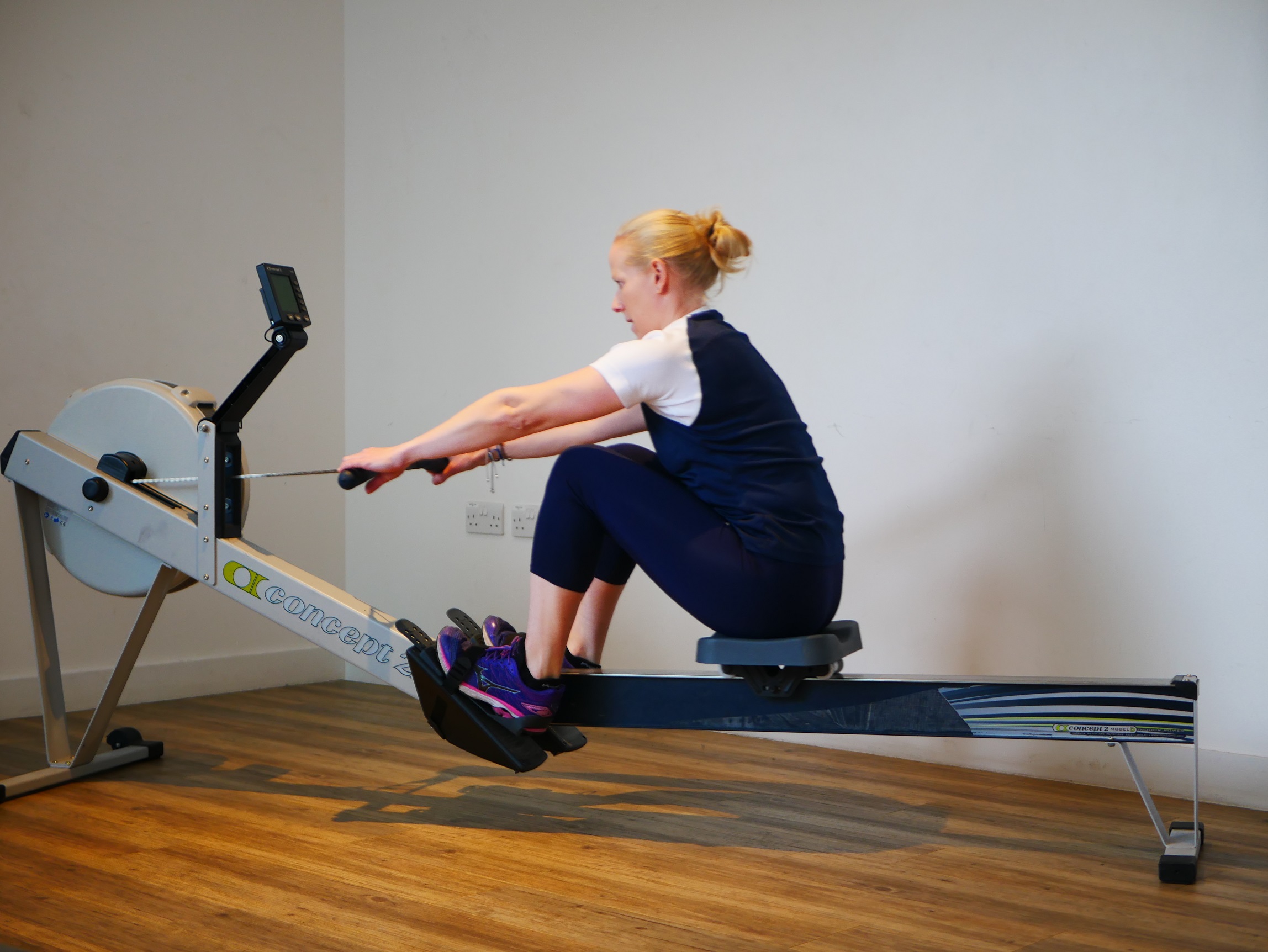
Push with the legs, trunk holding the body still
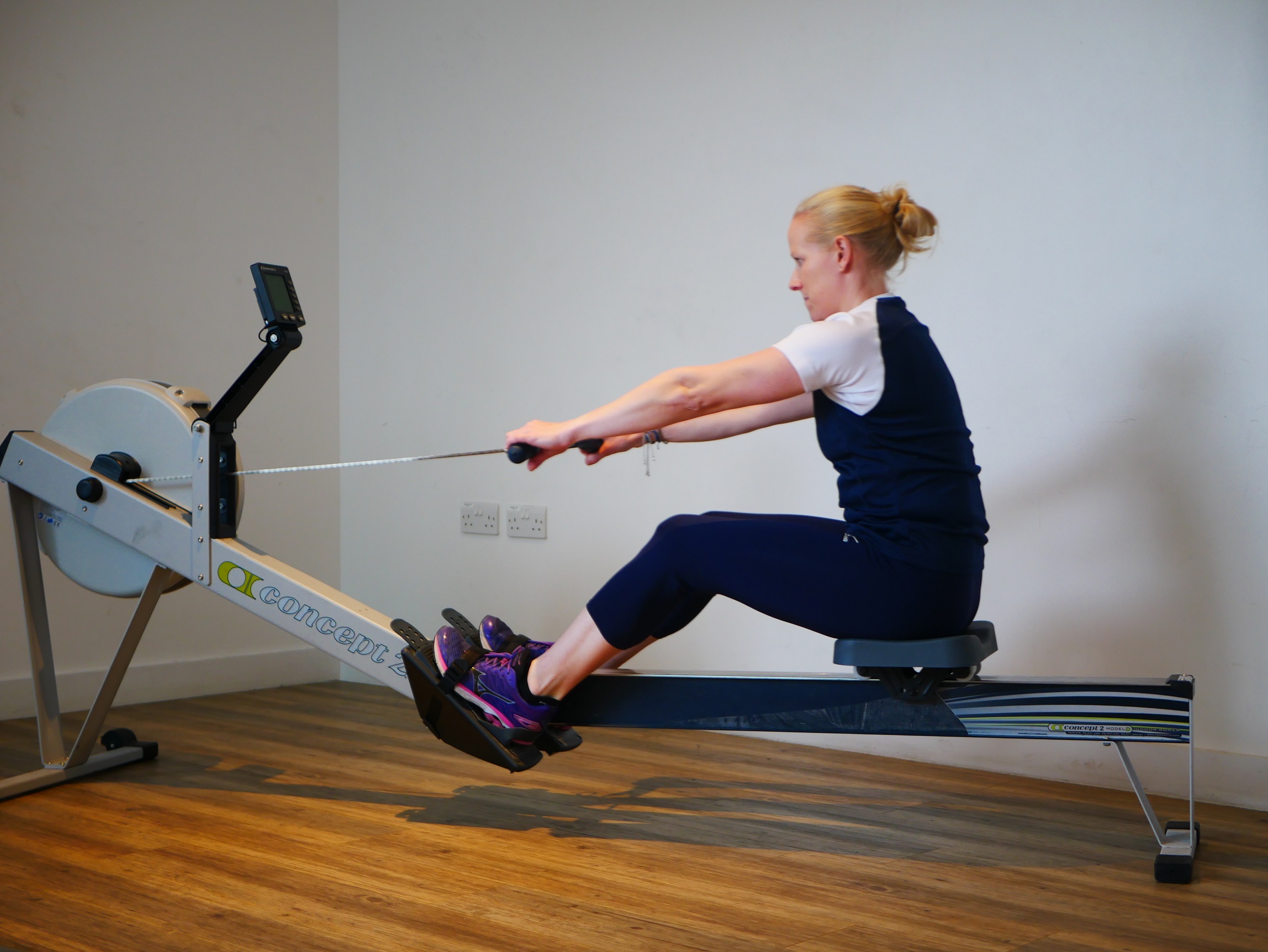
Once legs are nearly straight, start to lean the body back
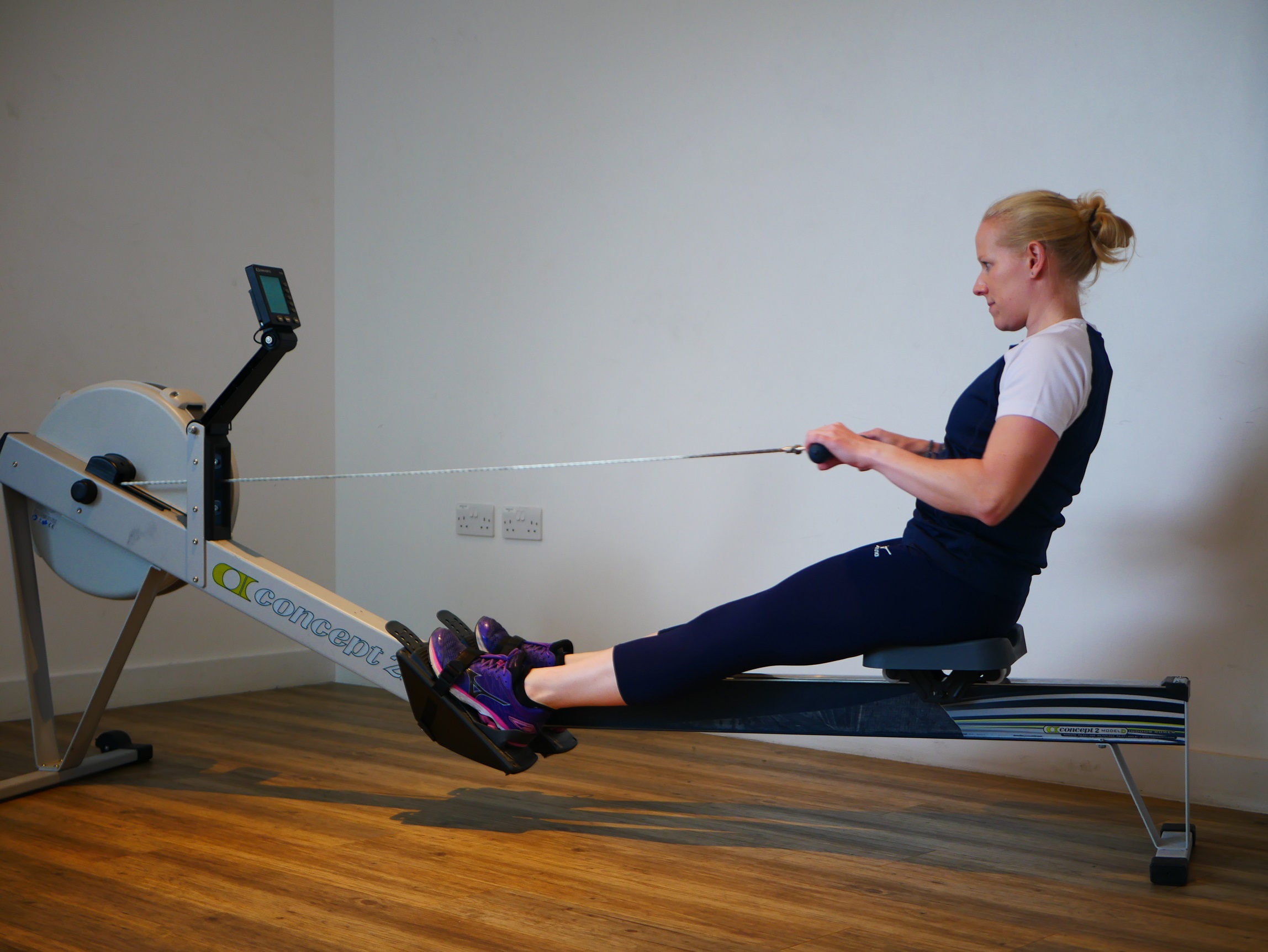
Use arms to draw the handle into the body around the lower rib cage
- There should be no movement in the back or shoulders until the legs are nearly straight - do not pull with the upper body before pushing with the legs
- Wrists should remain straight as the handle is drawn into the body
- No need to lean back more than about 11 o'clock at the end of the drive
The Recovery
The body movement sequence is Arms, Body, Legs
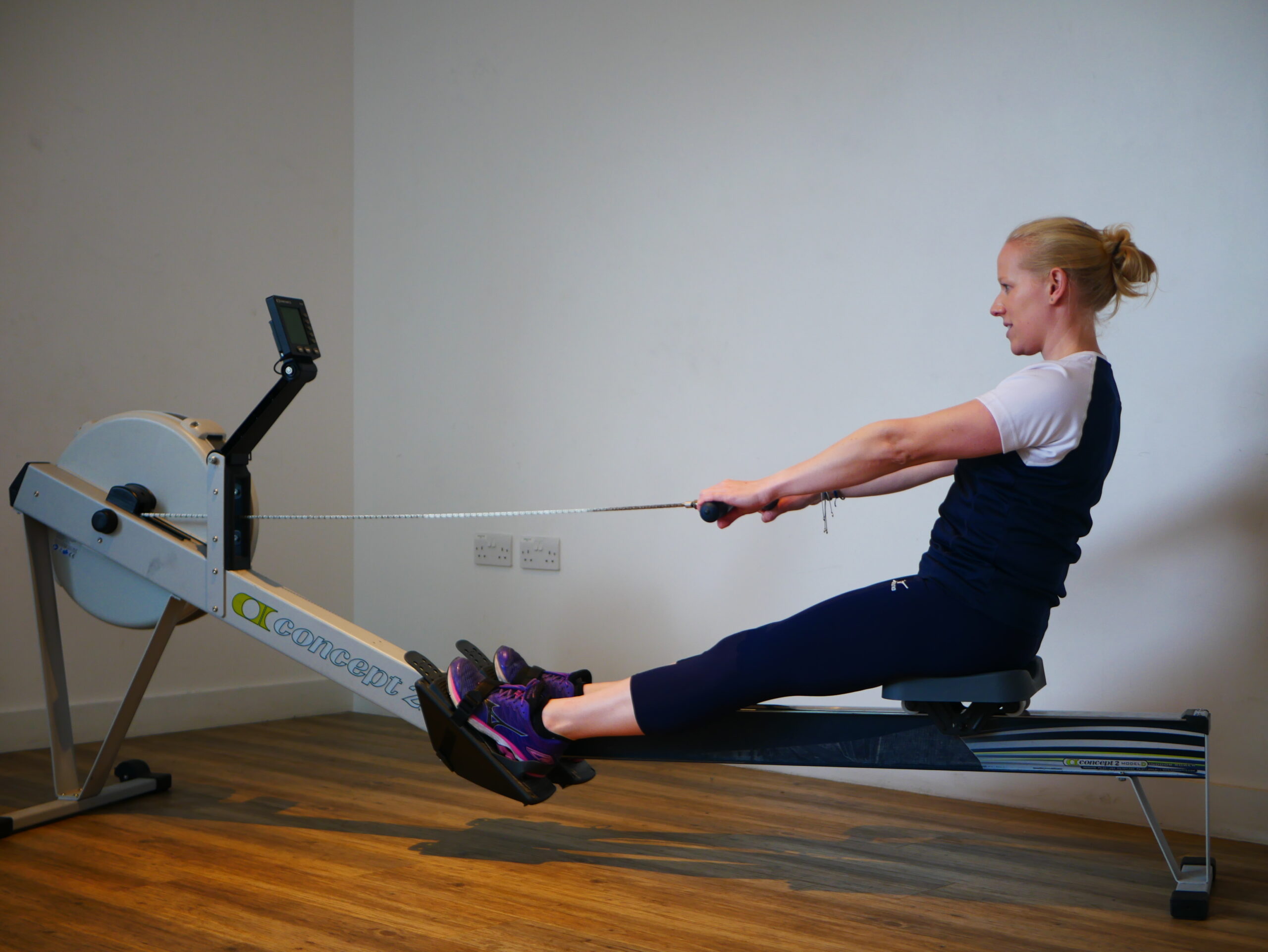
Straighten arms to move handle away from body
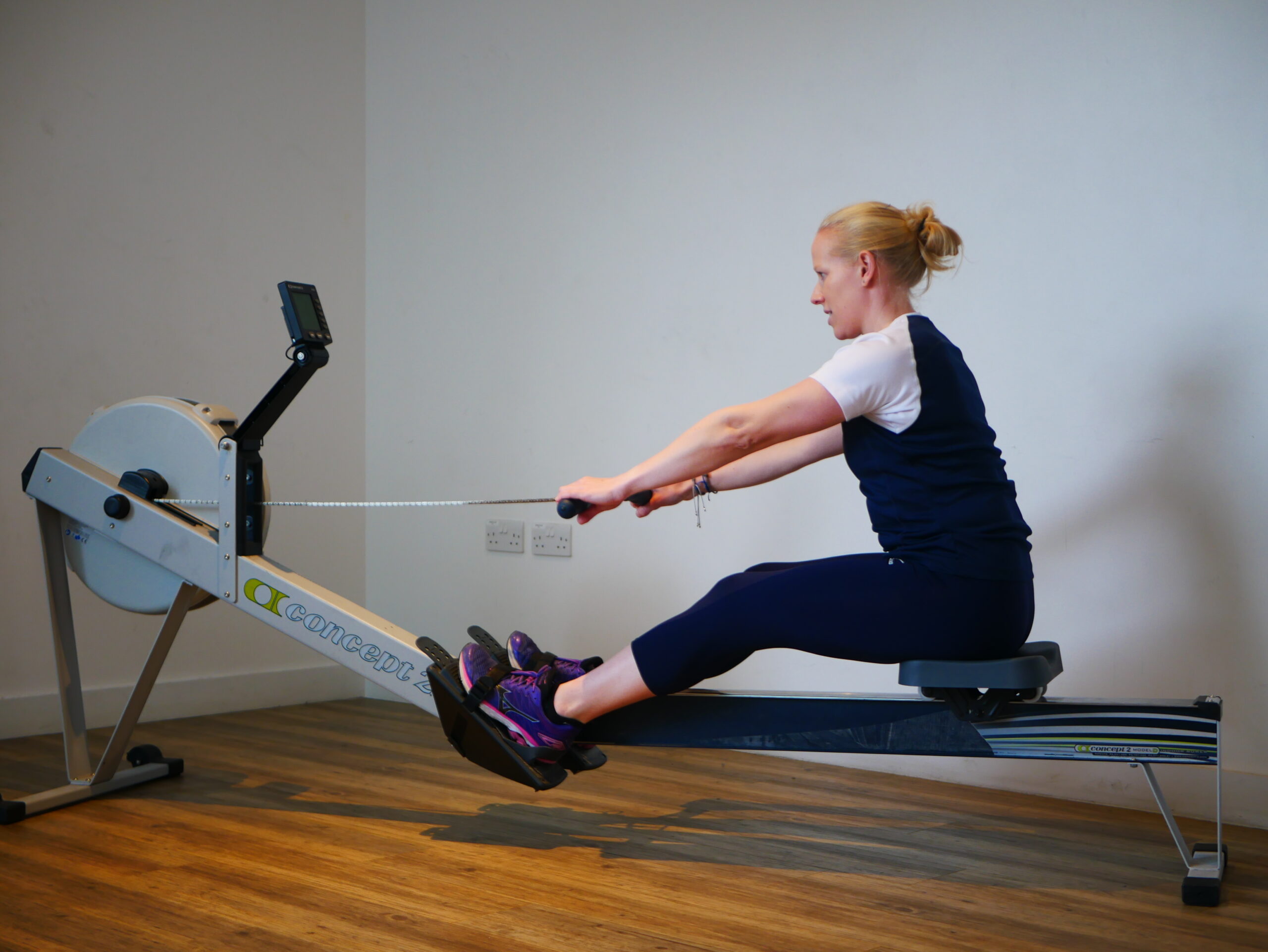
Keeping legs straight, tip body forwards from hips
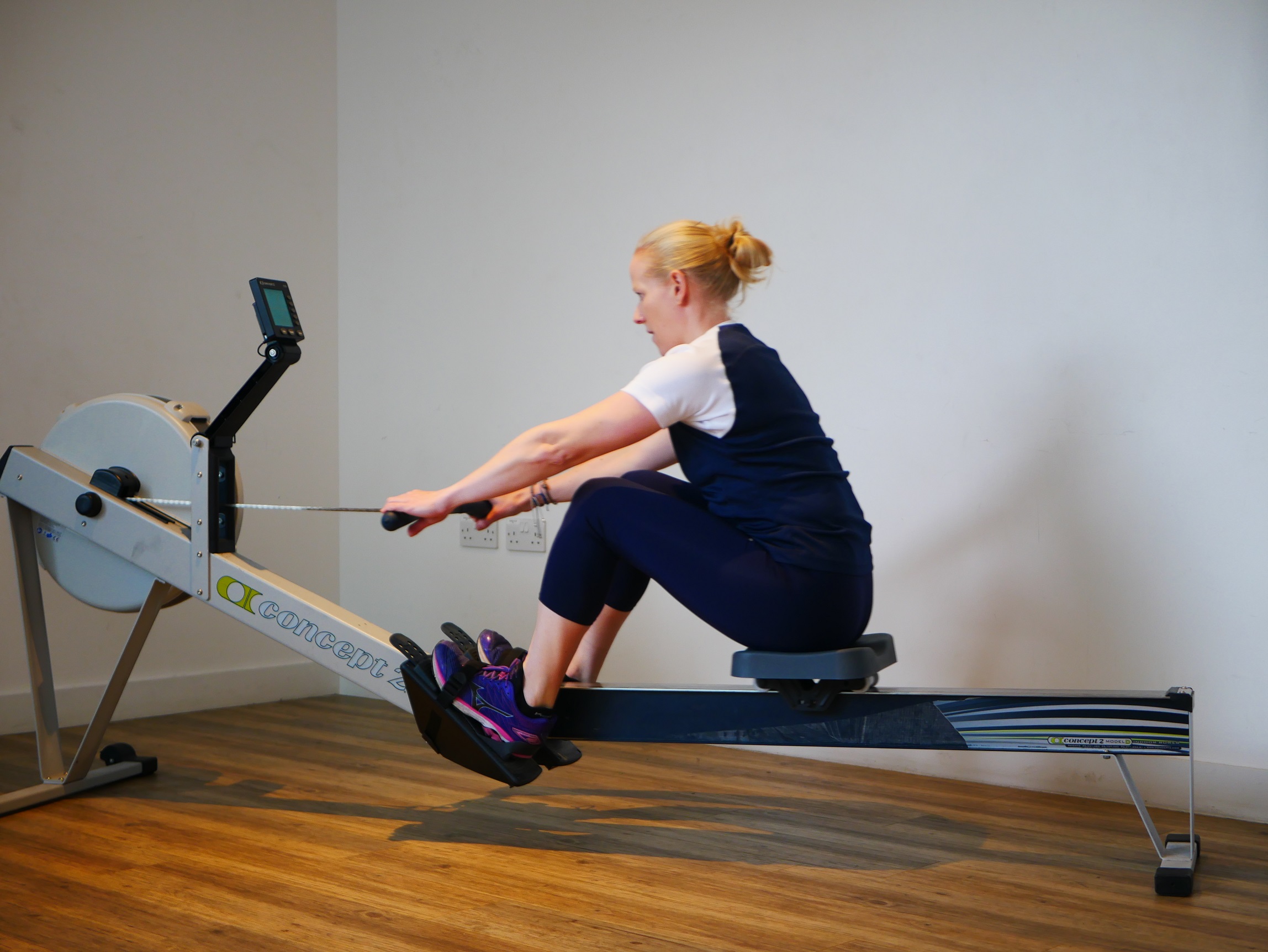
Keeping body still, bend the knees and slide legs forwards
REMEMBER...
The sequence is key: Legs, body, arms, arms, body legs
Focus on your legs: 60% of the power is from the legs 30% from the body and 10% from the arms
Maintain good core stability
Perfect your technique
Sharpen up your technique with the tips below to support your progression on the indoor rowing machine:
Keep the resistance setting low | The resistance or damper setting is like the gears on a bicycle. The higher the gear, the heavier it will feel. Keeping the setting low (four or below on a Concept2) means you are more likely to use all your muscle groups as intended as you will be able to maintain good technique for longer |
Adjust the footrest | Your foot should be positioned in the footrest so the strap goes across the widest part of your foot. This should allow you to get your knees directly above your ankles at the start of the drive phase. This is the optimum position to produce maximum power during the drive phase. Correct foot height will make your workout more comfortable and support both good posture and technique |
Focus on posture | Keep your back long and straight with relaxed shoulders. As you row, allow your body to rock forwards and backwards from the hips. The angle of rock should be between 11:00 and 1:00 on a clock face. Going any further forwards or backwards will not benefit the efficiency of your rowing stroke |
|---|---|
Focus on the sequence | As you start moving forward along the slide (the recovery phase) make sure your legs remain straight until the handle has passed over your knees. It is important to get the arms straight and body rocked forwards before bending the knees otherwise the handle has to be lifted over the knees. This allows the stroke to be more controlled and consistent |
Remember legs not arms | Roughly 60% of the power in the drive should come from pushing with your legs, 30% from your trunk and 10% from your arms. Push with your legs first, then rock the body back and guide the handle into your chest with your arms |
Relax and keep a loose grip on the handle | Keep your arms, hands and upper body as relaxed as possible. Avoid spending unnecessary energy by gripping too hard or pulling with the arms too early in the stroke |
Pull the handle straight into your chest | Pull the handle in a straight line towards your sternum or bottom rib, not your stomach or shoulders. This will allow a smoother stroke and helps keep the machine working at a constant speed |
Aim for knees above ankles | When moving forward during the recovery phase, focus on getting your knees directly over your ankles ready to start the next stroke. Do this by rocking your body forwards so your shoulders are in front of your hips, the seat should never touch your heels. This puts you in the optimum position to maximise power during the drive phase |
Slow down to speed up | Take your time when moving up the slide during the recovery phase. This will allow you more opportunity to recover and get your body in the correct position for the next stroke |
Keep the machine moving | Try to row smoothly and don’t completely stop before or after you have taken a stroke to allow the machine to continue moving. This will make it simpler to take the next stroke as you will not have to bring the machine back up to speed each time |
Row to the beat of your favourite track | Music can help to keep you motivated but is also a big factor in improving rhythm, timing and technique |
Increase variety | Vary your distances, times and challenges and you will quickly notice the difference in your fitness, posture and technique. The more time you spend working out on the machine, the smoother and more consistent your technique will become |
Row with your friends | Following the rhythm and technique of a friend can help improve your own timing and rhythm. Try out different stroke rates and increase or decrease the intensity. You could even use a mirror to study your own technique and make tweaks during your session |
Use a lower stroke rate | From time to time it is good to use lower stroke rates (18 - 24 strokes per minute) to improve your technique and develop an effective rowing style. At lower stroke rates you will be able to focus on the sequence of movements as well as building your aerobic fitness |
Strengthen your trunk | A strong trunk is essential in achieving an efficient rowing technique. Including trunk exercises in your weekly training routine will improve your technique as you will be able to maintain good posture and form for longer on the machine |
One way to improve your technique is to practise drills on the indoor rowing machine.
Encourages participants to learn how to stay "connected" to the footplate of the rowing machine without using the straps | |
Allows participants to practice sequencing of the rowing stroke | |
Encourages participants to use their legs to start the drive |
